Soil – it’s not what you know…..but what you don’t know!
2015 has been declared the International Year of Soil. Why soil you might ask? What’s so special about it?
Human kind are currently living beyond the means of the planet and if it keeps going at this pace we will need at least 2 planets in order to sustain life. Soil plays a major part in ensuring that our ecosystems thrive and survive and yet, I feel, remains one of the most unrecognized natural resources in our ecosphere. “The multiple roles of soils often go unnoticed. Soils don’t have a voice, and few people speak out for them. They are our silent ally in food production” José Graziano da Silva, FAO Director-General
The soil we plant in, the soil we walk on or build on is in danger because of the rapidly expanding cities, deforestation, unsustainable land use and management practices, pollution, overgrazing and climate change. The current rate of soil degradation threatens the capacity to meet the needs of future generations. And as long as soils are at risk, sustainable agriculture, food security and the provision of ecosystem services are compromised.
Organic material in the soil is essentially derived from residual plant and animal material, synthesised by microbes and decomposed under the influence of temperature, moisture and ambient soil conditions.
Soil provides living things with food, fibre and fuel. It supports wildlife, rural activities and urban life. Soil provides natural services such preservation of ecosystem structure and integrity, and ultimately the functioning of the planetary system via connections with the atmosphere and hydrosphere – acting as a store for carbon from the atmosphere.
With 60% of Africa’s workforce directly dependent on agriculture for survival – and at the same time with the growing poverty and food insecurity, these changes in the soil are affecting over 2 billion people and in particular most of the 852 million suffering from hunger across the world. Without healthy soil there can be no food, and this puts pressure on the already fragile feeding systems in the world.
How soil is being destroyed
The annual rate of loss of organic matter of soil can vary greatly, depending on cultivation practices, the type of plant/crop cover, the drainage status of the soil and weather conditions. “With 33% of all global soil resources degraded and human pressures increasing, critical limits are being reached that make stewardship an urgent matter” Mr. Graziano da Silva said.
From the end of the 1940’s to the beginning of the 1990’s, over 90% of the degradation of productive land was due to overgrazing, deforestation and inappropriate practices. We are quick to assume that the soil we degrade will just snap back after some rain but in actual fact It can take up to 1,000 years to form one centimetre of soil. By changing the composition and the structure of the soil, agriculture makes if more difficult for CO2 to be stored in the soil. The soil is no longer able to be a sink for carbon dioxide, methane and nitrous oxide and therefore contributing to the emissions of greenhouse gases into the atmosphere.
2015 the year of soil
Alongside water, soil plays an important role and is essentially a fundamental component in our overall ability to live on Planet Earth. In the opening paragraph of the 2014 WWF living Planet Report Marco Lambertini, Director General, WWF International says “Humanity’s well-being and prosperity – indeed, our very existence – depends on healthy ecosystems and the services they supply, from clean water and a liveable climate, to food, fuel, fibre”…. many of these can not be possible without fertile soils.
Creating awareness about the importance of soil coupled with better management and conservation is essential to ensure a prosperous future for humankind. And until we place value on the natural capital we will continue to destroy it and compromise the sustainability of future generations. When it comes to soil its really what you don’t know that makes all the difference. So this year lets remember the hard worker that soil is and play our part in conserving it.
Resouce Independent Urban Planning In Belarus
“Urban planning is an important source of development.”
UN-Habitat Executive Director Dr. Joan Clos
The 21st century places the methods of livelihood support and urban planning among the dominating factors that have global influence on a country’s economical, energetical and ecological independency.
Today Belarus faces the three main problems in the field of urban planning and citizens’ living space organization:
- Most of natural resources are being imported. Households consume more than half of country’s annual energy supply while house building has tendency to grow;
- An effective sustainable and workable recycling system needs to be implemented;
- An effective solution to private cars parking space is to be found.
In order to prevent future socio-economical, demographical and environmental developments regression the solution to the mentioned problems is needed in the short-term perspective.
Therefore on November 11, 2013 the 1st International Conference on 0-resource Urban Planning in Belarus in Minsk took place. Its main objective was the search of technical solutions for reduction of urban resource consumption by using renewable sources feeds.
One of the perspective projects in the field of reducing urban dependency on non-renewable sources of energy is “0-resource block “Dom-Park”. In general “Dom Park” is a type of household that was designed for achieving energy efficiency, improvement in waste management and efficient water usage. It does not only have solution to reduction of resource consumption but goes further and provides the keys from successful waste management and car parking system. “Dom-Park” is the philosophy of modern life space creation.
The project took the first prize in the Republican Contest of Innovative Projects in 2010. Its implementation is planned for years 2014-2018 in the Sokol district of the city of Minsk.
Picture 1 A “Dom-Park” household building
Source: http://www.c-o-k.ru/articles/koncepciya-pervogo-resursonezavisimogo-zhilogo-kvartala-v-belarusi
The houses of “Dom-Park” are to be build from ceramic hollow porous blocks of large format (produced in Belarus) and will use forced air-cooling system with all the year heat recuperation.
“Dom-Park” project benefits from innovative system of energy and water resources accumulation which gives possibility to generate 1.5-2 times more energy than the block load. The rests of generated energy are planned to be sold to energy supplying organizations during the day peaks (6 a.m. to 11 p.m.). The unique aerodynamic energy active features of “Dom-Park” buildings are able to convert wind pressure dynamic energy into electric energy. Additional energy sources are solar panels, heat pumps and waste recycling.
Well-planned waste management of “Dom-Park” project (including rubbish separation) allows obtaining synthesis gas. Household wastes can be used for enriching the soil in the communal areas such as flower beds.
“Dom-Park” uses local decentralized down-the-hole water intake and local sanitation facilities. Thorough wastewater sanitation will allow returning unpolluted water back to environment.
One of the interesting aspects of “Dom-Park” block is that it is free from non-housing stock. Situated far from business center, the block might reveal the problem of long lasting everyday transportation to and from work. Though the problem of food and daily needed items supply is solved by introducing the idea of “Domestic shops” in the hall of every building. The innovative shops will be operating 24/7 without a shop-assistant.
Another catching attention fact is that “Dom-Park” block provides plenty of car parking space in the form of whatnot (book shelf). The car slots are projected to be the extension of every storey of a building which gives an opportunity of economy on materials.
Picture 2 0-resource block “Dom-Park”:
1, 2, 3 – 10-storey household buildings with car parking;
4 – scientific monitoring center;
5 – technical maintenance center;
6 – the square with a fountain;
7 – children’s playground;
8 – wellness center and ski lodge;
9 – hydro power unit;
10, 11, 12, 13, 14 – sports playgrounds (for hockey and backetball, table tennis, mini-football, tennis, volleyball respectively).
Source: http://www.c-o-k.ru/articles/koncepciya-pervogo-resursonezavisimogo-zhilogo-kvartala-v-belarusi
“Dom-Park” project solves the three posed crucial problems though also has other benefits. For instance, various use of domestic products will support Belarusian industries. The project was created in Belarus and for Belarus taking into account its socio-economic and climatic peculiarities. Many of the mentioned innovative technologies have no comparable counterparts.
“0-resource block “Dom-Park” project in fact gives an opportunity to maintain the new way of living space organization. And though Minsk Municipal Executive Committee is skeptical about several ideas and technologies such as forced air-cooling system and heat recuperation, today the project is seen by the 1st International Conference on 0-resource Urban Planning in Belarus as the prospective way of reduction of urban resource consumption.
- Shaitar, V. (2014) “Concept of the first 0-resource block of houses in Belarus” in Plumbing, Heating, Air Conditioning, №9, 2014. Retrieved: 13/01/2015 from http://www.c-o-k.ru/articles/koncepciya-pervogo-resursonezavisimogo-zhilogo-kvartala-v-belarusi;
- “More than 180 foreign companies took part in the first Belarusian-American Investment Forum” in by, October 7, 2014. Retrieved: 13/01/2015 from http://telegraf.by/2014/10/bolee-180-zarubejnih-kompanii-prinyali-uchastie-v-pervom-belorussko-amerikanskom-investicionnom-forume
- Declaration of the first International Conference on 0-resource Urban Planning in Belarus, October 11, 2013. Retrieved: 12/01/2015 from http://www.mas.by/uploads/documents/deklaracia.PDF
Esther = Nr. Planets?
How many planets does it take to support my lifestyle?
The ecological footprint is an indicator of that. Simply put, how is our relationship with the planet? How many planets are needed to supply every individual
need? Officially this answer gives an indication of the Environmental Sustainability and the sustainability of individual lifestyles, organisations, goods and services, etc., meaning how are we insuring our children can meet their needs, just as we are meeting ours today? Is the world developing in a Sustainable way? Is our development one that “meets the needs of the present without compromising the ability of future generations to meet their own needs.” (World Commission on Environment And Development, 1987)?
As part of my self- assessment, I took the “Ecological Footprint- quiz” from several sources on the internet, (among others from WWF, The Footprint Network, Islandwood.org and ecologicalfootprint.com). I thought that, the fact of being a vegetarian, rarely buying canned products, and living in a flat would save me. I was convinced that my lifestyle was a “very respectful to the environment”- one.
One that wouldn’t be consuming so much energy generated from fossil fuels. The results were very different, ranging between 2.47 and 3.6 planets (this depends on especially the available area, the country I had to choose and a slight difference between the questions asked). I will not discuss the accurateness of the calculators, but one fact is clear, one planet alone is not able to provide for my way of consumption. In other words, I use more than is available for me, especially in the area of shelter and services.
Also the country’s averages may vary, depending on the wealth and on the amount of consumption. North America for instance would need 5 Earths, Western Europe would need 3, and Latin America and the Caribbean would need 1.8 Earths. This fits the idea that “20% of the world’s population consumes 80% of the world’s resources”. Think about that.
According to the WWF Living Planet Report (2014, p.10), the population of the Earth taken as a whole would need 1.5 Earths to provide for our way of living. In other words, it would take 1 year and 6 months for the earth to regenerate (provide sources and absorb the waste we produce) what we, as all inhabitants of the Earth, have used in one year. By 2050, this is expected to be 2 years (or 2 planets), if we don’t do anything.
Our ecological footprint is closely linked to the biocapacity of the Earth. Biocapacity is the amount of biologically productive area that is available to provide the resources we use and to absorb the waste. The biocapacity and the ecological footprint can be compared to see if our ecological behavior is well balanced or not. The biocapacity is expressed in Global hectares per person and it depends on the amount of land, forrest and natural resources of a country. One is an “Ecological creditor” if ones biocapacity is larger than ones footprint. Is it the other way around? Than we are an “Ecological debtor”. In the latter case, we are dealing with Ecological overshoot, which means the percentage we use more than the earth can produce. Resources turn into waste faster than waste turns back into resources. The results: destroying forests, collapsing fisheries, more CO2 emissions (which contributes to climate change), less fresh water systems etc.
 Esther uses as much as 3.6 planets. But we only have 1. I’m a clear case of overconsumption and would need serious steps to adjust my behaviour. I don’t think I can improve my recycling or will start buying second hand clothes. I could install some solar panels, or become vegan instead of vegetarian. I could also try to take the bicycle more instead of the car (during the weekend). But I don’t think only my contribution will have a significant impact. We need take individual action, and create a public demand and influence through political engagement, the business world, setting an ecological limit, and improvement or stimulation of green technologies in order to achieve large- scale change: to live within the earth’s bounds. Solution: Reduce, reuse and recycle. Increase biocapacity by the use of for example renewable energy, which would mean less fossil fuel consumption. Use less imported products (imagine the packaging, transport emissions of Co2.), use more public transportation and eat less meat….And at the supermarket, BYOB (bring your own bag).
Esther uses as much as 3.6 planets. But we only have 1. I’m a clear case of overconsumption and would need serious steps to adjust my behaviour. I don’t think I can improve my recycling or will start buying second hand clothes. I could install some solar panels, or become vegan instead of vegetarian. I could also try to take the bicycle more instead of the car (during the weekend). But I don’t think only my contribution will have a significant impact. We need take individual action, and create a public demand and influence through political engagement, the business world, setting an ecological limit, and improvement or stimulation of green technologies in order to achieve large- scale change: to live within the earth’s bounds. Solution: Reduce, reuse and recycle. Increase biocapacity by the use of for example renewable energy, which would mean less fossil fuel consumption. Use less imported products (imagine the packaging, transport emissions of Co2.), use more public transportation and eat less meat….And at the supermarket, BYOB (bring your own bag).
How much do we have? Who uses what, when and where can we reduce? The answer to these questions can move us towards a more sustainable one- planet living.
Let’s all become a Green Ninja and learn some Cungfood.
Unnatural Resouce Depletion
Natural Resource Management course brought me to the thought that the very combination “natural resources” opposes the human “unnatural” behaviour.
Here I include an ironic but in fact amazingly truthful video on the mentioned topic by Steve Cutts.
Enjoy!
And now my contribution to the world of natural resouces responsible attitude –
the range of motivating slogans following the idea of simplicity.
“Natural Resource Management in 6 Basic Steps”:
NRM? Step 2. Mind overshooting the bio-productivity.*
NRM? Step 3. Water and soil – don’t spoil.*
NRM? Step 4. Engage in eSOCIAL management.
NRM? Step 5.
hcaExtended
nosreProducer
elbisnopseResponsibility
NRM? Step 6. Get recognized by your responsible phylosophy: Certify!**
* – created together with Annette Winkler
** – created together with Javier Fresco
Resource: http://www.aarohi.org/
Eco-labeling: shop ethically.
On my previous post, “Sustainability: our role as individuals”, I described how, if we take responsibility for our daily choices, a little change in attitude and commitment can make a real impact towards a more sustainable lifestyle.
Today, I would like to keep contributing to that idea by adding some clarity on how to identify a truly sustainable product when we shopping. Although many people like to shop with at least one eye on the planet, ethical shopping isn’t necessarily easy. An endless number of products seem to be “natural”, “green”, “organic” or “eco-friendly” (usually through fancy labels covered in trees, flowers or animals) without offering any real evidence to back up their claims.

Don’t be Fooled by Greenwashing! Source: www.alive.com
How, then, can we easily identify which product is better than another? The solution can be found in Eco-labels.
WHAT ARE ECO-LABELS AND HOW DO THEY WORK?
An ecolabel is a reputable and recognizable symbol that manufacturers can put on the products they sell in order to demonstrate that their products were produced in compliance with certain sustainable standards. There are many different types of schemes, each covering a different range of environmental criteria. Some are very narrowly defined: for example, “100% recycled” only tells you that the product was produced utilizing 100% recycled materials, but it doesn’t guarantee that the manufacturer did not use child labor, paid their workers fairly, or that the factory produced no air pollution. That is how ecolabels differ from “green” symbols in the sense that products awarded an Eco-label have been assessed and verified by an independent third body.
For eco-labeling to work, it is important that labels appears only on those products that meet the standards they advertise. In practice, this means that manufacturers should certify their products according to those standards, usually defined by an independent certification authority, and that those standards are credible. According to Iseal Alliance (the global membership association for sustainable standards), standards are credible when
- are open and transparent,
- have a certification program to make sure the operations comply,
- manufacturer’s good practices are reviewed every year,
- and certifications are voluntary with operations undergoing audit to assess compliance.
In short, ecolabels offers three major benefits. First, it is a shortcut, an easy way for people to be able to say “I’m doing the right thing and I can verify that”. Second, ecolabels provide a competitive advantage for manufacturers through differentiation from its competitors. And third, ecolables encourage sustainability performance.
TRUST AND GENUINE ECO-LABELS!
The problem is when manufacturers exaggerate or mislead their claims which confuse customers. Thus, in order to make better choices when we go to the grocery store, here are some of the most trusted ecolabels that we can find in many products:
 Forest Stewardship Council – This certification accredits forest managers, manufacturing companies, and controlled wood products that exhibit responsible consumption of forest products.
Forest Stewardship Council – This certification accredits forest managers, manufacturing companies, and controlled wood products that exhibit responsible consumption of forest products.
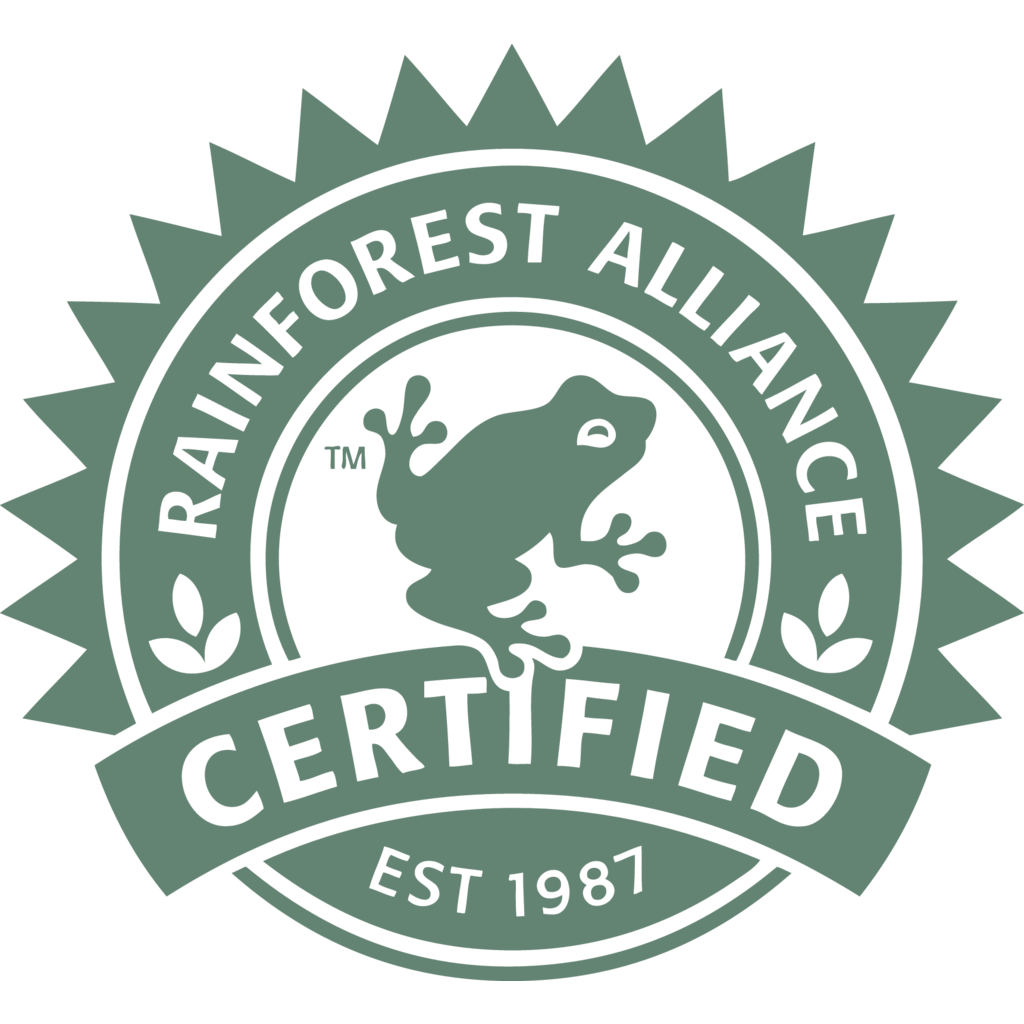 Rainforest Alliance – Provides certification on forestry, agriculture and carbon/climate standards designed to conserve biodiversity and to generate ecological, social and economic benefits. This program includes the FSC Certification standard.
Rainforest Alliance – Provides certification on forestry, agriculture and carbon/climate standards designed to conserve biodiversity and to generate ecological, social and economic benefits. This program includes the FSC Certification standard.
 Marine Stewardship Council – Set and maintain the standards for sustainable fishing and seafood traceability. When you see seafood bearing the blue MSC ecolabel, you can be sure it comes from a certified sustainable fishery.
Marine Stewardship Council – Set and maintain the standards for sustainable fishing and seafood traceability. When you see seafood bearing the blue MSC ecolabel, you can be sure it comes from a certified sustainable fishery.

UTZ Certified – Sustainable farming on coffee, cocoa and tea. The UTZ program enables farmers to learn better farming methods, improve working conditions and take better care of their children and the environment.
 Fairtrade standards are designed to address the imbalance of power in trading relationships, unstable markets and the injustices of conventional trade. It is based on a partnership between producers and consumers. When farmers can sell on Fairtrade terms, it provides them with a better deal and improved terms of trade.
Fairtrade standards are designed to address the imbalance of power in trading relationships, unstable markets and the injustices of conventional trade. It is based on a partnership between producers and consumers. When farmers can sell on Fairtrade terms, it provides them with a better deal and improved terms of trade.
 Bonsucro foster the sustainability of the sugar cane sector that enables producers, buyers and others involved in sugar and ethanol businesses to obtain products derived from sugarcane that have been produced according to agreed, credible, transparent and measurable criteria.
Bonsucro foster the sustainability of the sugar cane sector that enables producers, buyers and others involved in sugar and ethanol businesses to obtain products derived from sugarcane that have been produced according to agreed, credible, transparent and measurable criteria.
A complete list of all ecolabels currently used in Spain (and in any other country) can be found in the Ecolabel Index website.
IN CONCLUSION…
…shop ethically. Search for ecolabels, but make sure you understand what they mean. And if you can’t find the ecolabel you are searching for, don’t automatically assume that unlabeled products are bad. There are many ethical and environmental friendly producers that may not have the means nor the capacity to obtain a certification and still operates under the highest sustainability standards. Whenever you can, try to make informed decisions about what you buy.
(Un)Really Equitable Oil
The topic of maintaining responsible approach to production and operation services has certain connection to oil&gas industry. However the industry would mostly be mentioned as highly harmful, the one that has to pass away respectively sacrificing its leading position to green technologies. The words “sustainable” and “oil&gas” seem to be absolutely incompatible. And many times studying an article or doing a course on the topic I felt I was being told that sustainable future will and can happen only when oil&gas industry loses its dominating market position and, what is better, will no more exist. Such idea is usually followed by the pessimistic prooves:
- one day we will run out of natural resources such as oil and gas and this is why the industry cannot be considered reliable for future;
- oil&gas industry has enormous negative impact on biodiversity, forestry, communities, human health, ecology, ets.;
- means of increasing the industry’s sustainable approach are not effective;
- the way of turning the pure evil to environment into a responsible industry can hardly be found, etc.
But isn’t sustainable development about bringing change in order to reach common responsible attitude? Equitable Origin has developed an EO100TM standard for oil&gas companies to follow while green energy is not having enough capability to empower the modern world.
The young for-profit company founded by David Poritz specializes in certifying oil sites based on their social and environmental practices. According to the “EO100 Standard” certification system, the site must meet criteria in six areas including “Corporate Governance, Accountability, & Ethics” and “Climate Change, Biodiversity & Environment.” Equitable Origin certifies oil production sites that adhere to or exceed standards in each category. Every three years, third-party auditors set annual goals for site improvement.
As the first steps of the standard’s implementation are done the company starts bringing into life the idea of leading oil&gas sector to responsible work but is often blamed for greenwashing the industry. The company is said to bring controversy by suggesting that oil&gas industry can in fact be sustainable. One of the strong arguments is that sticking the “green oil” label to a good signals consumers that the company’s oil supplier is certified. Such is followed by associating this oil supply company with sustainability. While the standard only focuses on separate sites not certifying companies themselves.
In September 2014 two oil fields in the Orinoquia region of Colombia, USA became the first to be certified according to EO100 Standard. The two sites produce approximately 250,000 barrels of oil per day which makes about 25 percent of Colombia’s total oil output.
Yet this is just the beginning of the Equitable Origin’s story. And time will show if this is this just another standard, or is it going to actually create value.
DEVELOPMENT’S ILLNESS (1of 3)
SYMPTOMS:
Are these contradictions matter of chance?

GDP doesn’t asure psychological well-being. As this graph shockingly shows, there are more developed countries (purple) with high suicide rates, in clear contrast to more undeveloped countries (Blue) with low suicide rates
[Note that these charts miss overall on many undeveloped countries, mostly african. This premises are stated as far as the countries shown]
Gender Ratio: on average, men commit suicide 2.8 times more than women
Women Tendency: North Asian Countries. Men Tendency: Baltic countries
Average Minimum:Islands, Mediterranean, Africa, South America
Average Maximum: Northern and Eastern Europe, North-East Asia
⇒Studies have backed up implications of cultural points of view and harsh climate conditions on psychological wellbeing


Sociability Contradictions
Focusing on North-east Asia (following the example of South Korea) we find this is a region with high living standards and with one of the highest technological and broadband development (COMMUNICATION), yet, they are also among the highest rates of population with mental illnesses that seek ISOLATION and even suicide.
The African continent along with other Latin-American countries are in comparison less developed, yet, mental illnesses as depression and suicide are rare, exceeding illnesses and deaths due to crime, epidemics, poverty and precarious livelihoods.
DEVELOPMENT’S ILLNESS (2of 3)
EXAMINATION:
What alienating lifestyles may certain developments lead to and why?
In order to understand this mayor mismatch between development and human mental well-being I find reasonable to research from an anthropological point of view.
SETTLEMENTS: Celtic Village(North-western Europe) Massai Village(Mid-east Africa) Confucian Patriarchy Household (North-East Asia)
Universal factors in common to any grouping structure throughout history:
-Limits with regard to privacy and private space in two mayor scales.
- Community:
- -Visual limitation by structure with Defensive/Distinctive function towards the “outside”
- -Limited number of members in order to have an easier control and organization that would ensure security and performance (Decision-taking, customs, collection, preparation and consumption of food…)
- Individual Households:
- -Visual limitation by providing private un-seen spaces and shelter
- -Limited access to few group members with closest relationships
-Big clusters correspond with more developed societies as the more members a community has, the more complex is its social structure. Instead in rural villages when number of habitants increased or mayor disagreement aroused, a new village will be created with access to different crop fields or resources.
Now-a-day’s society has reached an utmost complex social structure, where at a global level the different strata have specialized in providing different services that all together make possible our every-day life. To say a few examples: Fruits from South America, fuels from the Middle-East, technology from northeast Asia…
Development and global-markets have transformed human’s natural social lifestyle where a vibrant community would work together for survival to a false independent lifestyle. We don’t rely directly on anyone else to feed or feel protected anymore, but on the wealth we make that can provide us with services. So our survival seems autonomous but we shouldn’t forget that we are will always be dependent to certain services.

Regarded as one of the features to encourage in the Gross National Happiness Report, vibrant communities give the individual a feeling of belonging, attention, leadership and protection which has a direct impact on happiness as it mitigates the feeling of loneliness and disorientation.
Actually in the first world this feeling is usually limited to households which are increasingly made out of less people: A couple and 1-2 children or an individual by himself. It’s within households that you are forced to co-exist and share space, time, costs and in the best case foster tolerance, patience and fraternity.
What messages does media instill in us?
A survey by the UK National Consumer Council, revealed that children who watch too much television and spend hours on the internet are “greedy and unhappy”
Today’s capitalism and competitiveness shapes our personality towards the eagerness and selfishness of wanting to possess things. We don’t need to share and we don’t really want to. Also we live with a constant unconscious feeling of dissatisfaction that makes us want more every time believing we will buy happiness and find perfection at some point.
[This warning about how the sense of community and real happiness is being threatened by consumerist development is very well reflected in the short-film: “Binta and the great idea” of Javier Fesser]
I also find interesting to draw a relation between extreme reliance on technology (which keeps developing at fastest pace) and social interaction problems:
Daily Needs⇒ telematic means of shopping, working, studying, online trainers…
Leisure and socializing⇒ Gaming and chats or social pages
Complete isolation is possible through technology: Welcome to future’s virtual lifestyle!
It might sound apocalyptic but indeed there is already a syndrome of extreme auto-imposed isolation that has been associated directly with development and it’s demanding expectations. For the time being, it only takes place in northeast Asia and those affected are usually teenagers and young adults that lock themselves in their room during months and even years. They are called Hikikomori, for them social confinement and virtual reality is crucial for survival and the only next step to completely escape is to commit suicide. What was meant as a tool has become the destruction of many.
[This concern is explained in the documentary “Hikikomori – Recluso Social” (social withdrawal) from Odyssey.]

In developed countries not only do children prefer TV or virtual games but adding to that, spending time outside gets more challenging. Children living in busy cities are sensibly not allowed to play outside as freely as children from more quiet villages. The issue about control and structure of large communities plays an important role in this aspect. Insecurity along with working parents that can’t look after them keep children at home, having less social interaction both with other children as with their busy family members. “Nannies” become crucial in this competitive scene. Who raises your child? Teacher? Nanny? TV?
To solve this problem, there is lately an architectural trend to build condominiums in new urban expansions. They constrain ‘safe’ comunal spaces where parents might be more confident to let their children play rather than outdoors, yet condominiums end with street life suggesting more insecurity and inequality outdoors.
I believe the design of development through architecture and urban planning should firstly bear in mind possible social repercussions due to the lock in risk these actions convey.
DEVELOPMENT’S ILLNESS (3 of 3)
DIAGNOSIS:
Mainstream Developed Lifestyle isn’t working properly
-Live to produce →Produce to consume→Consume to Live →Exhaustion of resources
-Growing competition→ Harder work→Less time,more stress→Social Illness
-Sets aside moral values, importance of family and community and real value of life.
TREATMENT:
Develop a Hansik way of life!
Looking back to the case of South Korea, follows an attempt to rescue and reinforce positive cultural values: The idea is to translate all the values of the Hansik and spot the difference regarding the western table manners in order to extrapolate them and find possible premises that apply to Korean identity.

These premises are only a start-up for inspiration. In order to heal the society of Seoul it’s necessary to induce a social mechanism that fosters more confortable interactions in public space. Granting freedom and privacy to the individual without turning its back on them, making them feel supported as part of a whole not as an insignificant part of a supply chain, alleviating the perception of excessive demanding society.
Regarding dishes as metaphors of types of space: Korean private dishes are minimal though more specialized than western ones, instead shared dishes are key actors -> Private space should be confortable and focused and characteristic and public spaces should be emphasized.
“You with yourself somewhere” -Zen Meditation
Utmost private spaces (bedroom/meditation room) should follow this quote being comfortable with human scale and having a very personal and minimalistic character in order to give a sheltering feeling without overwhelming the individual.
- A. Freely design your paths // Preset pathways
- B. Melded singular spaces // Overall space that imprints the rest
- C. Sequence towards privacy // Clear private delimitations
- D. Coy approaches// Upfront approaches
If we look at Korean traditional architecture we find that it has elements that trigger social relations over other societies such as the traditional bench that skirts the perimeter of the house in order to be able to chat with someone who is outside from inside. There is also the different concept of doors common throughout all northeast Asia where it slips in between the wall disappearing at some time allowing continuity in space.
On the other hand I should clarify that this community spirit and open houses traditionally only took place between family members as Hanoks(traditional Korean houses) were usually arranged around patios conforming the Confucian patriarchy. This introvert architecture, as modern condominiums, left streets flanked by walls.
If we analyze former Korean customs and usage of space, we find some precepts are already exemplified: the concept of sharing spaces with a gradation of public and private in a way we don’t in western society:
- “Bangs”: they are rooms rented for hours for different uses: karaoke, friends’ party, watching movies…
- Public huge saunas 24-hour open: Koreans usually go with their family on weekends to relax and can spend an entire day even sleeping all together in the floor among others
- Examples of re-appropriating and sharing of public space or green areas such as ‘pocket parks,’ looked after and decorated by volunteer citizens.
‘The Hansik way of life’ advocates these differences and peculiarities that bring positive results.
“It is not our differences that divide us. It is our inability to recognize, accept, and celebrate those differences”.
–Audre Lorde
LIFE AND DEATH WITHIN CULTURAL IDENTITY
THE EXAMPLE OF SOUTH KOREA
The Bridge of ‘Life’: where dozens of people leap into the Han River each year.
A Hansik table: the art of eating
Our contemporary world has lead towards a unification of all cultural expressions. In this globalized scenario, those considered ‘developed’, are dressing the same fashion, listening to the same music, and having very similar daily routines, no matter in what part of the world they are. It is outstanding though, how one of the few cultural factors able to resist this standardization is gastronomy! Food habits, typical dishes, even table manners remain deeply rooted in different households.
On a recurrent basis every person has a craving for a certain “familiar taste”. Historically, many rituals and important decisions have been taken over big meals. All in all, gastronomy carries a strong sense of cultural identity, being its research an interesting point of view towards a socio-cultural background: the different approaches to the table and interaction with other table members can reveal different ways of understanding communication and privacy.
Hansik is the name given to Korean traditional food.
In a Hansik table as important as the richness in taste is the diversity and colour of its plates, their orientations and positions are carefully looked after creating a piece of art in itself.
The main characteristic that differs Korean from other western or oriental cuisines is that there is very little meat and a great amount of fermented dishes. Lately Korean gastronomy is in the spotlight as one of the most healthy, antioxidant and probiotic diets. Another unique feature is that traditional Korean tables have several main dishes side-dished by a variety of others, and all of them are meant to be shared. Only the drinks, the soup and the serving of white rice are of individual use. The concept of ‘sharing’ that induces a sense of community, not only rules the traditional eating habits but is also a main characteristic of the Korean culture.
In common with other oriental cultures, Korean’s legacy is linked to Confucianism: a series of table manners restrict what seems to be an accessible collective table through rules such as organization, silence and respect towards the elder. It is also interesting how you depend entirely on others to get your drink served!
In contrast, let’s take a look to another cultural feature that sadly stands out in South Korea nowadays:
According to the United Nations Human Development indicators South Korea is the country with the highest suicide rate in the world. Being this the leading cause of death among people under 40.More than 10 public figures have committed suicide in the past eight years including professional footballers, Korean pop stars, movie actors and a former president. In the OECD, South Korea ranks among the highest for divorce, alcohol consumption, and household debt.
This high suicide rate can be due to cultural aspects as well as to the failure of modern lifestyles in suiting the psychological wellbeing of the population.
Regarding the cultural aspects, it’s true that the Korean TV soap operas and movies often depict suicide in their storylines, thereby it is said that media fosters romantic notions on the subject. Not to say the spikes in the number of suicides after a celebrity has decided to take their life away. It is also said that media doesn’t promote the correct awareness over this mental illness as it simplifies the causes of suicides as an easy way of overcoming a problem for example a failure of an exam, end of a relationship, debt stress or any other reason.
Confucian ideals still dominate in this society, such as the idea that a man has to be strong and support his family putting up with stress by himself, which prevents people from seeking help. Other ideals such as honor towards the family can be a burden to those young people that feel helpless against what society demands of them, failing to live up to the expectations that they land the perfect job or get married. Older people can end their lives attempting to relieve the burden of their presence on a family of struggling care-takers.
Never the less South Korea has developed at a very high speed and as a consequence the suicide rate tripled, overall among the young generations. So apart from the possible cultural influence above described, it is clear that the conflict between modern lifestyles and traditions as well as the loss of cultural identity has triggered this psychological crisis throughout the country, overall in urban areas.
I found interesting to counter the vibrant integrating culture of sharing, that radiates from a hansik table with the dull feeling of desolation and loneliness that can drag someone into committing suicide. This example illustrates how we can abstract positive values in every culture to furthermore develop new life-styles based on their own identity. Unification and progress shouldn’t end up with the world’s cultural richness, but promote collaboration, learning and tolerance. We are at a time of human development where a new perspective is needed, finally capable to understand that one size doesn’t fit all. Perhaps extrapolating authentic cultural features would help us redesign different ways of development suitable for each context, independent from each other but taking part in a relationship of respect in a freely communicated world.
Hansik is the life within the Korean identity. Suicide is the death. As well as the probiotic nature of the Hansik diet is proven to cure, the values it represents can also help cure the sickness in its nowadays society.
Samsung-sponsored ironic proyect: Experts say the redesign had the unintended consequence of strengthening the site’s association with death, quadrupling the number of recorded suicide attempts since it began.


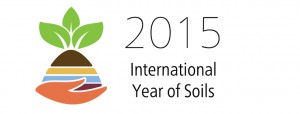
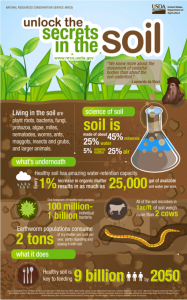

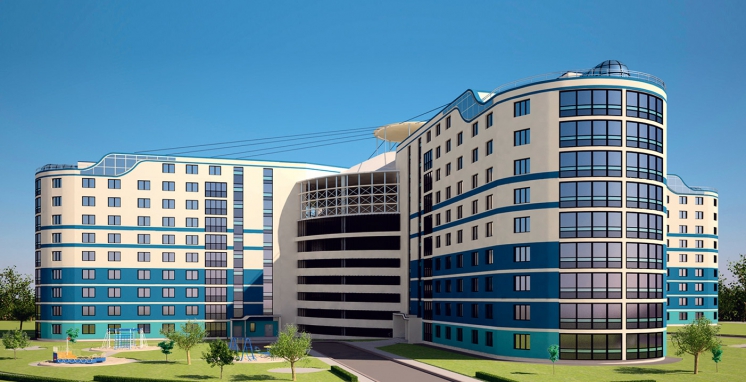
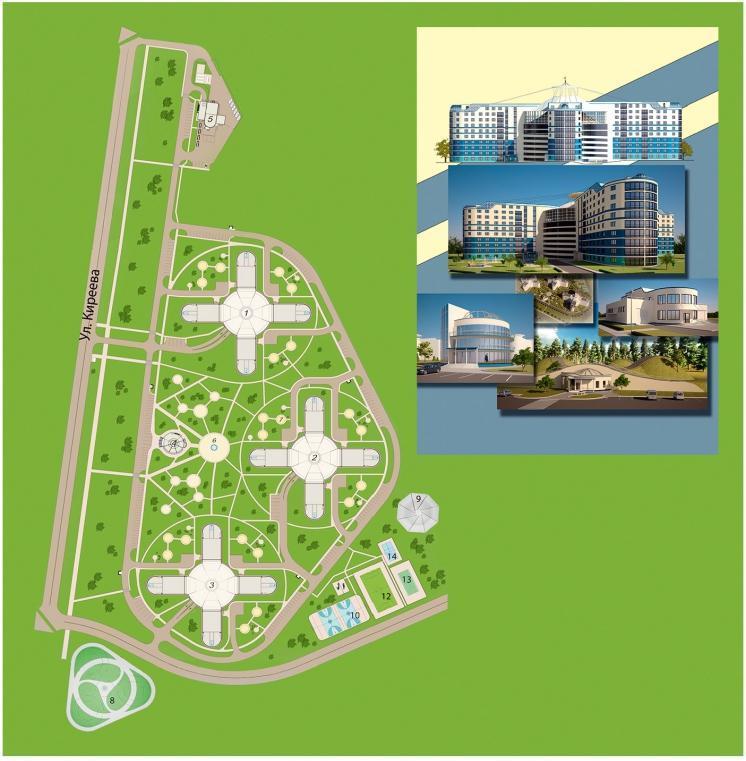







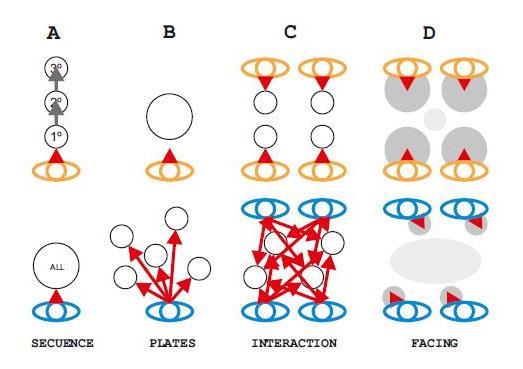
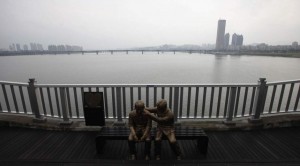
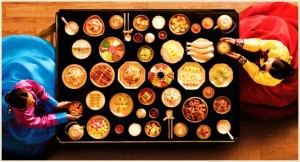

.png)
].gif)
.png)
].png)
].png)
].png)
.png)
].png)
.png)
